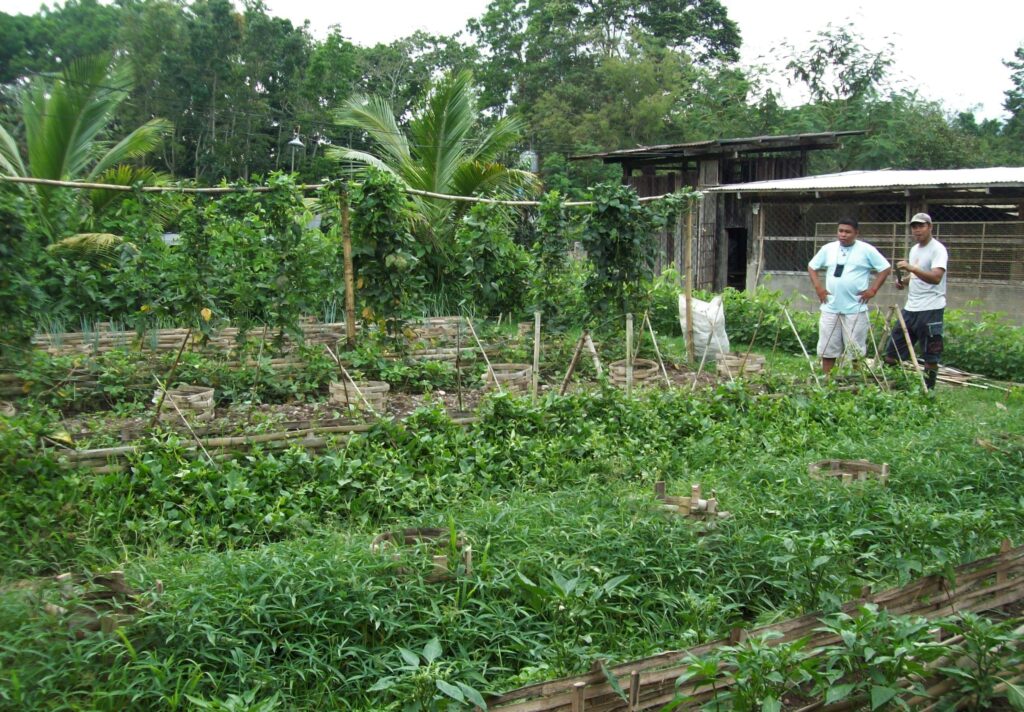Text and Photos by Henrylito D. Tacio
In virtually every city around the world, agriculture coexists with fast-paced urban life. In industrial countries such as Japan and the Netherlands, urban farming has long been a response to the problem of limited agricultural land.
In cities in the United States, green spaces offer therapeutic relief, and vegetable gardens provide fresh produce to markets and income for the homeless. New York, for instance, has more than 1,000 community gardens. Berlin has 80,000 garden plots.
Cities in developing countries have long been familiar with urban farming. In Manila, kamote, kangkong, and other vegetable plots are common garden greens. In Singapore, residents can look forward to a permanent supply of pork and poultry. Urban farming also provides up to 30 percent of the vegetables in Nepal’s capital, Kathmandu.
Urban farming is widespread in African cities, and with good reason. Urban orchards and market gardens make Mali’s capital self-sufficient in citrus fruits and vegetables. The same is true in Togo, where the capital, Lome, grows enough vegetables to meet its own needs.”
Urban farming is everywhere – from the slums of Nairobi to the residential neighborhoods of Santiago to carefully designated sections of Shanghai. Yet, it is not recognized as a viable urban industry, and those who practice it are hobbled with constraints.
“No one has paid any attention to it,” deplores Irene Tinker, a professor at the Department of City and Regional Planning and Women’s Studies at the University of California at Berkeley. “The data on urban farming is very weak.”

The most comprehensive global research on urban food production has been conducted by the United Nations Development Program (UNDP), with assistance from the Washington, D.C.-based The Urban Agriculture Network (TUAN). The research showed:
* Twenty-five to 75 percent of urban families around the world are engaged in food production at least part of the time; 68 percent of the families in Dar-es-Salaam, 37 percent of the families in Maputo, 40 percent in Suva, and 65 percent in Moscow.
* In and around 18 of China’s largest cities, farmers meet 85 percent of the urban demand for vegetables and more than half the demand for meat and poultry.
* In the United States, farms in metropolitan areas account for more than a third of all crop and livestock sales. About 30 percent of Russia’s food is produced in suburban farm plots, or “dachas.”
* In Java, urban home gardens supply an estimated 18 percent of the calories and 14 percent of the protein consumed in the island’s cities. Farmers in Buenos Aires meet one-fifth of that city’s nutritional needs.
Yet all this activity is almost invisible to most researchers and development professionals and is often ignored or even prohibited by most city planners and policymakers.
“Urban farming is getting swept aside because of an outmoded planning concept of the industrial city and agricultural countryside,” explains Dr. Jac Smit, TUAN’s director. “Cities in the real world are not developing according to these divisions of labor. Urban agriculture is moving ahead,” he adds, “and to some extent, we have to catch up with it.”
Some countries are responding to the call. “In the African cities, a large amount of land is used for farming in and out of season,” says Souleymane Diallo of Senegal. “Farming on our doorsteps can now be found all over our cities. The local people are slowly learning the tricks of the trade, particularly as far as out of season cultivation is concerned. This takes time, however, because produce is traditionally grown only during the rainy season.”
The bulk of urban “farmers” are those moderately poor, and in Africa and Latin America, they tend to be women without formal-sector jobs. Along with other domestic obligations, women typically have the job of keeping the family larder well stocked. By tending household or neighborhood gardens, they can either reduce the demands placed on their husband’s wages or supplement those wages with cash. Households in nearly half of the developing countries spend 50 to 80 percent of their income on food.
It is now becoming clear to city authorities that so-called urban farms are essential food sources as the world quickly approaches the time when 50 percent of its population will live in the cities. “Urban farming is clearly far more than a means of subsistence, an informal activity, or an illegal business,” comments Dr. Luc Mougeot, program officer of the Urban Environment Management Program of Canada’s International Development Research Center.
Dr. Smit claims that urban farming has an intrinsic advantage over large-scale rural food production. “Urban agriculture tends to be more organic than rural,” he says. “Rural farming in recent years has moved towards larger farms that use chemicals and machinery to increase yields. And most rural agriculture is monocropping that needs fertilizers and insecticides.”
As a means of cleaning and greening the world’s cities, the potential of urban farming is tremendous. “In low-income areas of developing country cities, the soil is practically dead and breeds disease,” says Dr. Smit. “Taking care of the soil helps to restore biodiversity to the city. When the soil is fed you get trees and bushes that clean the air. Diseases transmitted by dust and polluted water begin to disappear.”
Of course, there are significant health hazards associated with urban farming. The use of improperly treated waste in farming caused a cholera epidemic in Chile and Peru in 1991. Food grown along roadsides can be contaminated by lead from vehicular emissions, which can also deposit heavy metals in the soil. And chemical fertilizers and insecticides, along with animal wastes, can leach into the soil and water table, causing severe health problems in densely populated urban areas.
Research by a number of international organizations shows that it is safe to use waste for farming, provided that consistent and well-monitored treatment procedures are followed. Critics, however, point out that cities in the poorest countries often lack the institutional capacity to properly manage and monitor such treatment.

